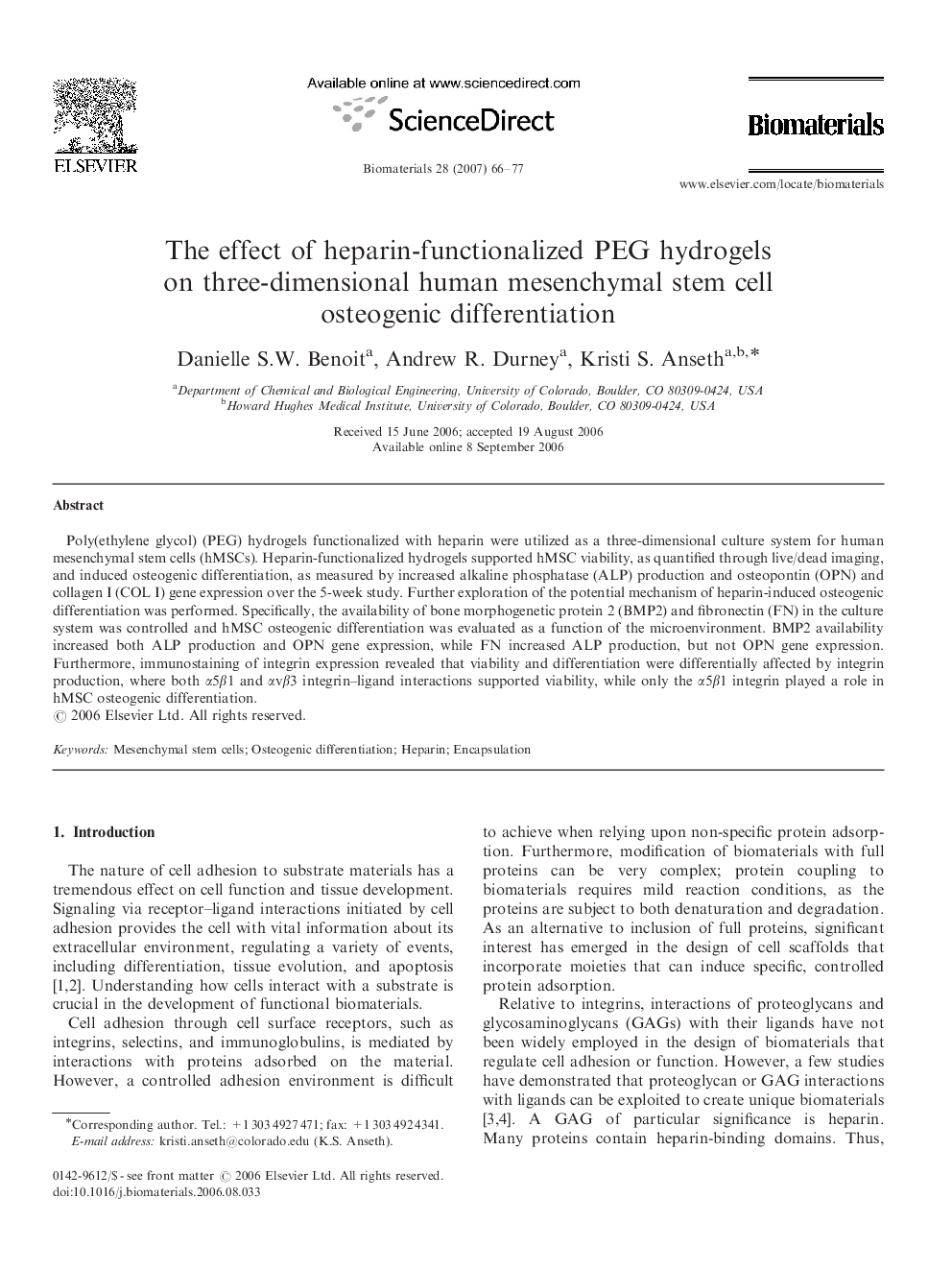| Article ID | Journal | Published Year | Pages | File Type |
|---|---|---|---|---|
| 11131 | Biomaterials | 2007 | 12 Pages |
Poly(ethylene glycol) (PEG) hydrogels functionalized with heparin were utilized as a three-dimensional culture system for human mesenchymal stem cells (hMSCs). Heparin-functionalized hydrogels supported hMSC viability, as quantified through live/dead imaging, and induced osteogenic differentiation, as measured by increased alkaline phosphatase (ALP) production and osteopontin (OPN) and collagen I (COL I) gene expression over the 5-week study. Further exploration of the potential mechanism of heparin-induced osteogenic differentiation was performed. Specifically, the availability of bone morphogenetic protein 2 (BMP2) and fibronectin (FN) in the culture system was controlled and hMSC osteogenic differentiation was evaluated as a function of the microenvironment. BMP2 availability increased both ALP production and OPN gene expression, while FN increased ALP production, but not OPN gene expression. Furthermore, immunostaining of integrin expression revealed that viability and differentiation were differentially affected by integrin production, where both α5β1 and αvβ3 integrin–ligand interactions supported viability, while only the α5β1 integrin played a role in hMSC osteogenic differentiation.
